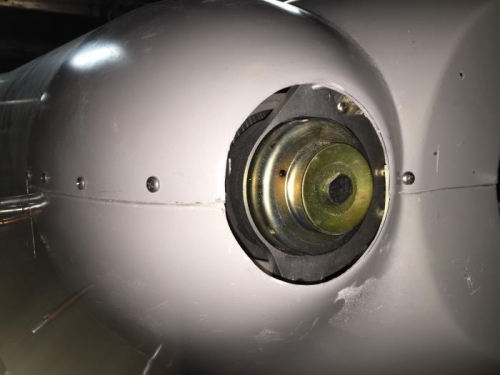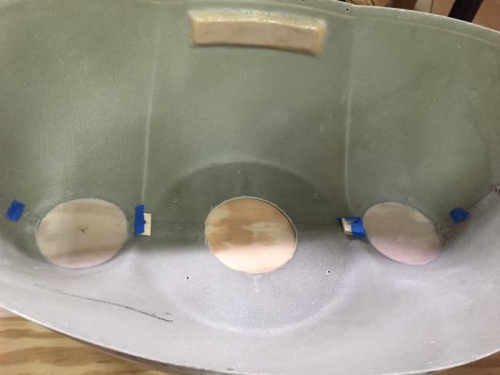
|

|
|

|
Rob's REBVAIR Project

|
Date: 9-10-2015
|
Number of Hours: 2.00
|
Manual Reference:
|
Brief Description: Cowl Inlet Rings: Part 1
|

|
So the nose bowl air inlets can either just be open-face holes in the cowl, or fitted with 1.5" long 'rings' that presumably help funnel more air into the engine compartment. These are usually epoxied into place. The tricky part is the fact that the nose-bowl is made up of two halves, so gluing something into the inlets requires some forethought to keep from turning your two-part nose-bowl into a one-part nose-bowl.
The cowling is pretty-much done so it's safe to finally drill out the nose-bowl connections for #8 sized machine screws (Image 1).
Once held in shape, the nose bowl is placed nose down on a support.
So what do you use as rings? Well, WW sugests anything will do, but often uses PVC pipe on his projects. I found an inexpensive PVC coupler that was approximately the right size, but needed the wall materal thinned out from 0.25" to 0.125". At the local machine shop, the guy was going to charge me $85/hour for shop work, and he wasn't sure how much it was going to cost to increase the ID of the coupler on the lathe. So even if it had taken 15 min, I'd still be dishing out about $21 minimum + the $4 for the conduit. At onlinemetals.com I got two 1.5" long aluminum rings for $19 including shipping, already at the required 0.125" wall thickness, so that took care of that debate.
|

|

|

|

|

|
|

|

|

|
|

|

|
Copyright © 2001-2024 Matronics. All Rights Reserved.
|

